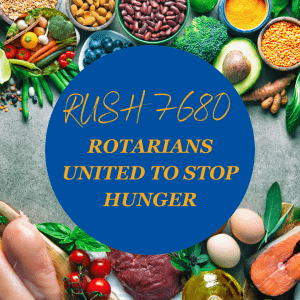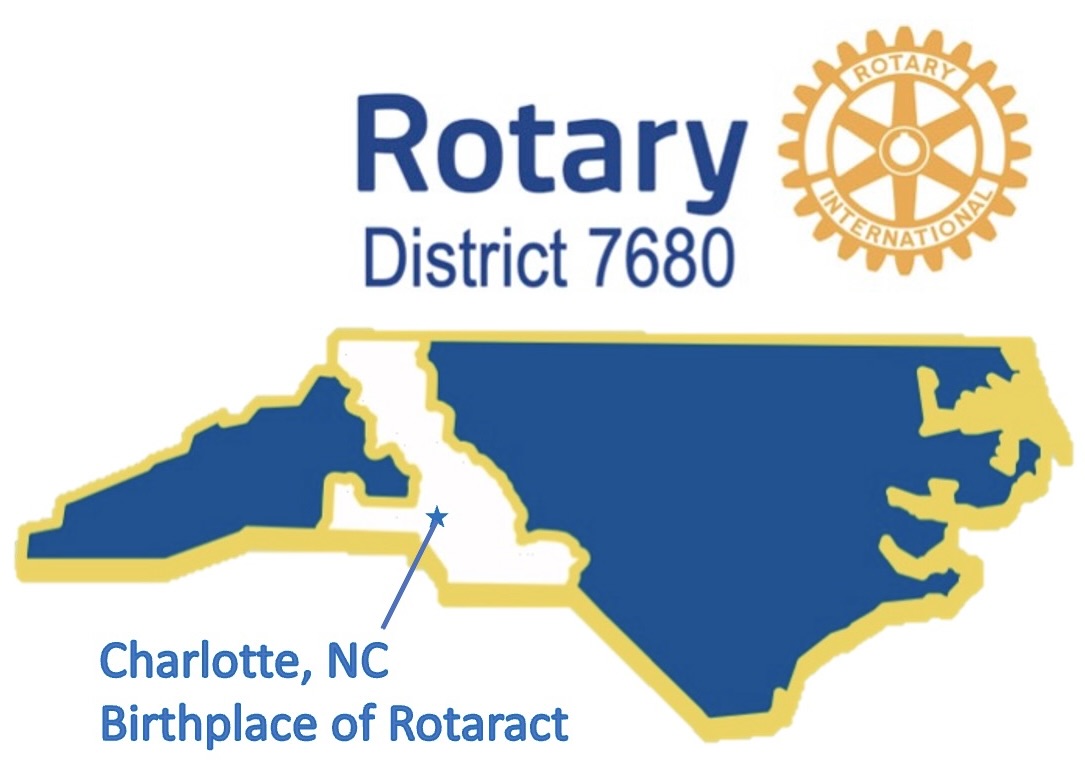
ROTARIANS UNITED TO STOP HUNGER
Rotary Zones 33 and 34 agreed to participate in this initiative because it’s something we’ve always done…helping our neighbors in time of need. Reporting for this has been simplified and now, in conjunction with our food banks serving District 7680, we are using the months of September and October to focus our food collection efforts. We know food insecurity is a constant problem for our communities and Covid has only increased the need.
How Clubs Can Help
The driver behind the timing of this is the 40th anniversary of the Second Harvest Food Bank of Metrolina (SHFBM) in Charlotte. District 7680 is one of 40 organizations partnering with SHFBM to celebrate its anniversary. To help SHFBM raise much-needed food, we are asking each club to conduct a food drive with a goal using “40” or a multiple of 40 as your target. Four hundred cans of a certain item or 40 different types of vegetables. Goals are very flexible…we just ask you to connect it to “40”!
- You may wish to conduct a rolling food drive where people can drop off canned goods.
- You may wish to have a container at your club if you’re meeting in person and ask members to bring a can or two for donation.
- You may wish to have a neighborhood food drive where volunteers can collect canned food.
- You may wish to donate 40 hours of service at a local soup kitchen or donate $400 to a local partner agency involved in providing food to those in need…the goal is yours to set.
- Whatever you decide to do, we want to encourage you to be imaginative and safe and to have fun as you help this organization and other food banks fulfill their mission.
The SHFBM serves nine of the 14 counties covered by District 7680. These include the following: (Please click on the accompanying fact sheets for each county to identify potential partner agencies or a local child hunger program.)
- Mecklenburg fact sheet
- Union fact sheet
- Cabarrus fact sheet
- Anson fact sheet
- Cleveland fact sheet
- Gaston fact sheet
- Iredell (part) fact sheet
- Rowan fact sheet
- Stanly fact sheet
or clubs in the SHFBM area:
- Food collection barrels will be brought to wherever you like (club meetings might be an option) provided you request 3 or more barrels and can be picked up as well by SHFBM as long as there are at least three barrels.
- I’m attaching a picture of each of the two different types of barrels, one cylindrical and inflexible, and one which is cardboard and flexible. They are both capable of handling about 125 cans which is equivalent to 125 pounds of food.
- I’m also attaching a pdf of their current list of most needed items. They’ll take anything but prefer cans and these items. No glass products, please.
For clubs in Ashe, Alleghany, Alexander and Wilkes Counties, and part of Iredell, you are served by the Second Harvest Food Bank of Northwest NC. Click here for assistance in locating partner agencies.
Finally, Richmond County is served by the Food Bank of Eastern and Central North Carolina. Click here for additional information.
 Remember that we want to be as uniform in our reporting as possible for the Feed Ten Million Initiative. Toward that end, we want to ensure we adhere to the tenets of the Four-Way test as translate our time, talent, and treasure into meals served. So here are the tools we use to convert dollars and time volunteered:
Remember that we want to be as uniform in our reporting as possible for the Feed Ten Million Initiative. Toward that end, we want to ensure we adhere to the tenets of the Four-Way test as translate our time, talent, and treasure into meals served. So here are the tools we use to convert dollars and time volunteered:
- Second Harvest can provide seven pounds of food for every dollar they receive due to their ability to purchase in bulk. So, every dollar donated should be multiplied by 7 to determine the total poundage of food purchased.
- Feeding America says that on average, 1.2 pounds of donated goods equals one meal. So, donated canned goods can be weighed with the total weight divided by 1.2 to determine the total number of meals.
- A non-profit, Independent Sector, valued the average time of a volunteer for 2021 for North Carolina at $26.00 per hour. To account for downtime, we will use a rate of 20.00 per hour. So, using Second Harvest’s numbers where purchasing power enables 7 pounds of food to be acquired for a dollar, we can estimate that each hour translates into 140 pounds of food. 140 divided by 1.2 equals about 116 meals.
Reporting Results
We want to ensure we track the number of meals served by reporting our results on the Feed Ten Million form.
